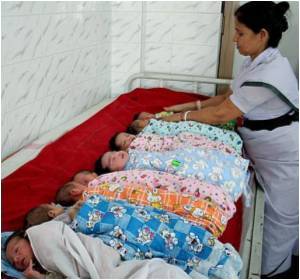A four-year health care project in one of India's poorest districts has been complemented for decline in infant mortality and for pregnancy-related deaths.

In 2004, the Indian organization Pravara Medical Trust, the Östergötland County Council and the Faculty of Health Sciences received funding from the Swedish International Development Cooperation Agency to start an intervention study in the Ahmednagar district in central India.
The study covers 235 villages where more than half the inhabitants live under the Indian poverty line of 1,000 rupees (equal to 18.50 USD) a month, and where health care is at an extremely low level.
"In the most remote districts, there is neither access to nor demand for maternal and pediatric health care," Johansson says. Three out of every four births took place in the woman's home. Almost five of every 1,000 pregnant women died in connection with childbirth, and 80 of every 1,000 newborns died before their first birthday. Over half of the children under five were malnourished.
The project was inspired by the Swedish model, with nurse-based maternal and pediatric clinics; the goal was to open nine permanent and five mobile primary care centers that could serve the most isolated villages. 385 Indian nurses, physicians, laboratory workers and social workers were employed, as were 235 volunteer women as local contacts.
The effect was unmistakable. The lines soon began coiling around the centers. There were not only pregnant women and mothers of small children; other villagers with diverse complaints also came.
Advertisement
Over the same period, the proportion of hospital births climbed from 40% to 74%. The proportion of mothers who died in connection with pregnancy and childbirth fell to barely 1 in 1,000; infant mortality stayed at 43 in 1,000. The project has now been concluded.
Advertisement
Source-Eurekalert












